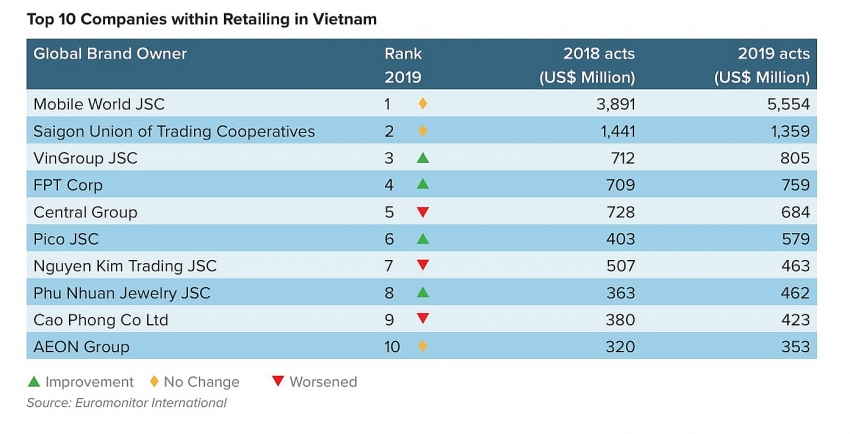Central Group slows down performance in Vietnam
 |
A Euromonitor International study based on the estimated value of online and offline sales last year revealed that Thailand-based Central Group ranked fifth among the top 10 companies in the Vietnamese retail industry, with revenue of $684 million in 2019, while it reached $728 million in 2018.
As of September 30, 2019, Central Group operated 1,922 stores across 51 provinces in Thailand and 133 stores across 40 provinces in Vietnam, according to its website.
Central Group has poured billions of US dollars into mergers and acquisitions (M&A) deals in Vietnam, its largest overseas market. In 2017, the country contributed about 13 per cent of its total revenue.
According to Bangkok Post, the conglomerate is targeting an initial public offering in this year’s first quarter with the expected value of THB61 billion ($1.87 billion). However, the path for Central Group remained bumpy due to the COVID-19 gripping both Thailand and Vietnam in the past months.
2019 was another year of growth for the Asia-Pacific retail industry. What set the region apart from other markets was the proliferation of new brick-and-mortar and e-commerce retail formats and new brands experimenting with various innovations in order to win over young and increasingly tech-savvy customers, according to the survey.
Meanwhile, locally-invested Vingroup JSC, FPT Corporation, Pico JSC, and Phu Nhuan Jewelry all reported improving performance in 2019 (see chart).
Ranking third among the top 10 retail companies in Vietnam, Vingroup reached $805 million in revenue in 2019 from $712 million in the year prior.
Vietnam is seeing ongoing urbanisation and evolving demand from young urban consumers, which is driving strong growth in modern retail channels, such as convenience stores as well as the rapidly expanding e-commerce. Indeed, the growing influence of these factors can be seen in the emergence of formats like mini supermarkets, which target demand for grocery shopping that fits into the flow of busy urban lifestyles.
However, a significant majority of the population reside in rural areas with low levels of disposable income and low population density, which are not conducive to the development of modern retailing formats. As a result, traditional channels, such as small independent grocers, retain an important role in the market.
What the stars mean:
★ Poor ★ ★ Promising ★★★ Good ★★★★ Very good ★★★★★ Exceptional
Related Contents
Latest News
More News
- PM orders investment model for North–South high-speed rail (December 22, 2025 | 17:43)
- First members of Danang International Finance Centre revealed (December 22, 2025 | 17:39)
- Securing capital and efficiency for Vietnam’s 2026-2030 growth ambitions (December 17, 2025 | 10:00)
- Driving double-digit growth through green and circular transformation in Vietnam (December 17, 2025 | 09:00)
- Vietnam bucking trend in the global M&A landscape (December 16, 2025 | 14:20)
- Vietnam’s green transition demands collective financial action (December 15, 2025 | 12:00)
- VIR workshop highlights capital and policy for sustainable development (December 15, 2025 | 11:00)
- National Assembly approves pilot mechanisms to accelerate major projects in Hanoi (December 12, 2025 | 11:29)
- Vietnam eases policy approval requirements, simplifies foreign and outbound investments (December 11, 2025 | 17:53)
- Unpacking new momentum in Vietnam’s M&A market (December 10, 2025 | 09:59)

 Tag:
Tag:




















 Mobile Version
Mobile Version